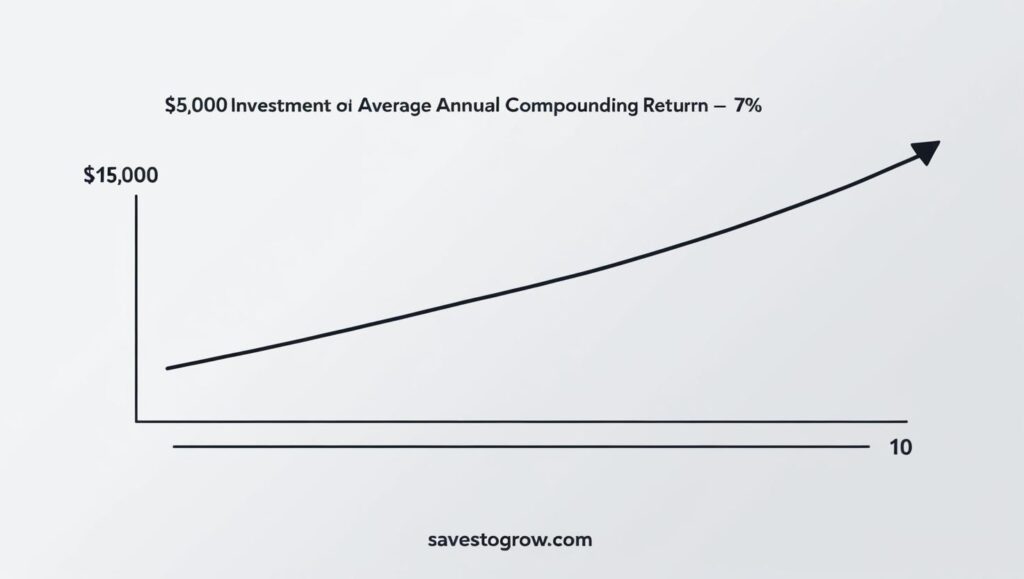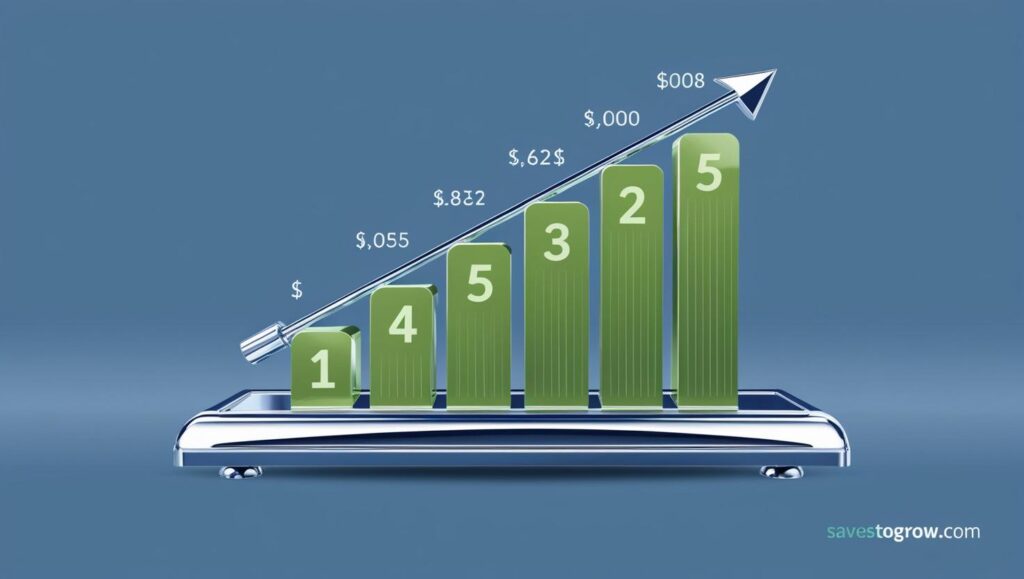I. I Didn’t Find a Time Machine—But I Built One
Let’s rewind.
In 2018, I had $5,000 in my savings account, earning literal pennies.
I was cautious. I didn’t grow up around investors or entrepreneurs. The idea of “risking money” felt reckless. But what felt riskier over time was doing nothing.
So I did something different. I treated investing like building a time machine—not to escape the present, but to send value to my future self.
Fast-forward to 2024, and that original $5K? It’s now over $50,000.
Here’s exactly how that happened.
II. The Time Machine Mindset: Compound Growth Over Time

A time machine doesn’t make money fast—it makes money inevitable, over time.
Once I stopped chasing quick wins and started playing long-term games, my behavior changed:
- I stopped checking stock prices daily.
- I prioritized time in the market over timing the market.
- I picked investments that could survive decades, not just trends.
Think of it like this: Every dollar I invested was a message I sent forward in time that said:
“I’ve got your back.”
III. What I Invested In (No Gimmicks)
No crypto rollercoasters. No meme stocks. Here’s what I did instead:
1. Index Funds (VTI, VOO)
- Low-cost, diversified exposure to the whole U.S. stock market.
- Automatically reinvested dividends.
- I dollar-cost averaged monthly, rain or shine.
2. Roth IRA Contributions
- Tax-free growth. I maxed it out yearly.
- Focused on ETFs and a few growth-focused mutual funds.
3. A Simple 80/20 Strategy
- 80% broad market index funds
- 20% “tilt” toward sectors I believed in (tech, green energy)
4. Automated Everything
- I automated transfers so I wouldn’t “forget” or make emotional decisions.
- Treated investing like a non-negotiable bill.
That was it. No complicated strategies. Just consistent compounding, left untouched.
IV. The 10X Growth: What Actually Happened

Let’s break this down with real numbers.
- 2018: Started with $5,000
- Monthly additions: ~$500 (automated)
- Annualized returns: ~12% average (S&P 500 performed well over this period)
- Reinvested all gains
By 2024, my total contributions were ~$ 40 K.
Portfolio value? Over $50,000.
That’s not magic. That’s compound interest + time + behavioral discipline.
V. Lessons I’d Share With My Past Self

If I could step back into that old time machine and talk to 2018 me, here’s what I’d say:
- Start now, even if it’s small. Time matters more than amount.
- Don’t wait for confidence—build it with action.
- Your future self is counting on you to care today.
- Ignore the noise. Play your own game.
VI. Investing Is the Most Ethical Form of Selfishness

Here’s the truth: I didn’t invest just to get rich. I invested because I want freedom.
- Freedom to say no to work that drains me.
- Freedom to help my parents when they age.
- Freedom to take a break without panicking.
That’s what real wealth is—a freedom multiplier. And building it doesn’t require genius—just consistency and belief in the long game.
FAQs
Q: Is this advice only for people with extra money?
A: No. Even $50/month compounds over time. The key is starting early.
Q: Should I wait until the market crashes to invest?
A: That’s market timing. History shows staying invested beats guessing tops and bottoms.
Q: What if I’m already 40+? Is it too late?
A: No. It’s later than ideal, but still better than never. Start now and optimize what you can.
Q: What’s the safest way to begin?
A: Open a low-cost brokerage account and invest in a total market ETF. Set it and forget it.
Q: Can this work without a financial advisor?
A: Yes—if you’re willing to learn and stay consistent. Advisors help, but aren’t required.
Source:
- Bogle, J. (2007). The Little Book of Common Sense Investing
- Vanguard Total Market Fund (VTI) historical returns
- NerdWallet Compound Interest Calculator






